Recent Articles
Popular Makes
Body Types
2016 Subaru WRX STI Road Test and Review
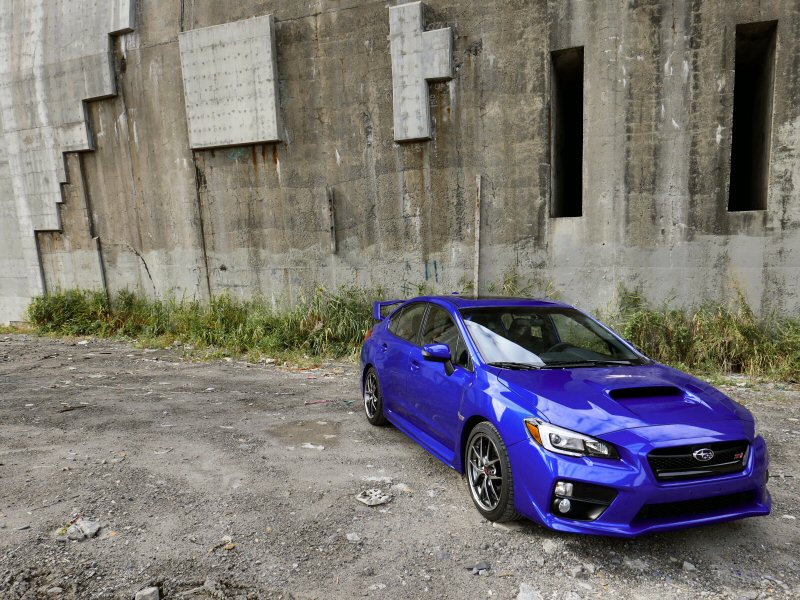
2016 Subaru WRX STI front 3/4 ・ Photo by Benjamin Hunting
The 2016 Subaru WRX STI sails into its second year post-redesign with only a few minor equipment changes to mark its passage. Deprived of its longtime nemesis, the Mitsubishi Lancer Evolution (discontinued after 2015), the WRX STI finds itself facing off against a fresh batch of competitors from Volkswagen (the Golf R) and Ford (the Focus RS), each of which adds hatchback versatility to the turbocharged all-wheel drive package that has long been the STI's bag. Still, the latter two are an unproven commodity while the Subaru has been packing in compact performance fans for over a decade in America - and longer still in the rest of the world.
In fact, I posit that the Subaru WRX STI's greatest rival can be found not wearing a VW or Blue Oval badge, but rather sits just on the other side of the showroom. The standard WRX stands as a very reasonable facsimile of the STI in terms of speed, agility, and attitude, and it costs significantly less. There remain a few areas where Subaru's flagship sedan bests its sibling, but it's up to you to decide whether they're important enough to your driving needs to swell your monthly payment.
The Wing's The Thing
At least there's no mistaking the 2016 Subaru WRX STI for the 'plane Jane' WRX - at least not if you keep the standard biplane-sourced wing affixed to the sedan's trunk lid. No, you can't buy a hatchback version of the STI (an oversight that will undoubtedly send a percentage of would-be buyers to the competition) but Subaru has planted the gently-curved ironing board back there almost as if to draw attention to the three-box nature of the WRX STI's silhouette. The look-at-me spoiler is joined by an aggressive body kit that leaves little doubt in the minds of all around you that you'd rather be spinning donuts in a snow-filled parking lot, or launching the car airborne on a gravel rally stage.
If you can't handle that kind of attention - and you'll definitely get it, especially from men aged 14-35 and the local constabulary - you might want to opt for the more discrete trunk lip spoiler that's available as an option on the Limited trim level. Sadly, gold wheels aren't offered with the STI, but you can spec 18-inch BBS rollers (again on the Limited) and have them plasti-dipped if you want to go old-school.

Photo by Benjamin Hunting
Old-Tech Engine Still Strong
One of the surprises from the Subaru WRX STI's redesign was the decision to retain the services of its 2.5-liter turbocharged four-cylinder engine, a unit that carries over from the previous-generation car and which is in many ways not as advanced as the 2.0-liter found in the more humble WRX. Call it a question of finite development dollars, or perhaps the desire to stick with a proven drivetrain for its hottest model (the six-speed manual transmission found in the STI is another pre-2015 holdover), but whatever you do don't think it's crippled the car in any way.
With 305 horsepower and 290 lb-ft of torque at its command, the 2016 Subaru WRX STI feels well endowed in most driving situations, particularly once you're past 2,000 rpm and the full effect of the turbo make itself known as a rising crescendo of forward thrust. Still, I wonder what direct injection could have done for the STI, and whether we'll ever see a 400 horsepower factory-backed tuner edition of a car that has already sparked so much aftermarket fervor. At least you can move over most of your go-fast parts when trading in your previous generation WRX STI and take a crack at improving the sedan's five-second 0-60-mph time.
(One more symptom of the WRX STI's legacy four-bang: middling fuel efficiency figures of 17-mpg city and 23-mpg highway).
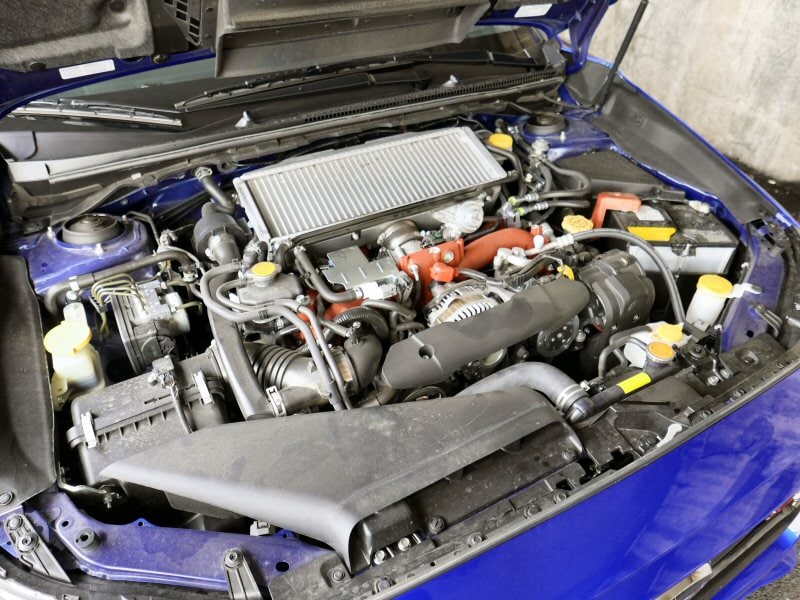
Photo by Benjamin Hunting
High-Tech All-Wheel Drive System A Boon On Track
One area that can't be accused of mining the past - well, maybe the recent past - is the 2016 Subaru WRX STI's all-wheel drive system, which improves on that of the WRX by adding locking differentials in the place of the latter's open designs and installing a driver-controlled center differential that significantly improves road course lap times. Called DCCD for short, the system allows for torque bias to be automatically shuttled to the front or the rear of the car by using the Auto + and Auto - modes, and offers the further wrinkle of a manual adjustment mode that can even fully lock the center differential for the ultimate in traction over loose or slippery surfaces.
In normal driving the torque split for the STI can vary from 50:50 to as much as 41 percent front / 59 percent rear, but in a high performance situation it's a genuine pleasure to feel the car's differentials (helical at the front and Torsen at the rear) load up and release in automatic mode as the all-wheel drive system fights for optimal cornering grip. It's a marked improvement over the WRX on a track, and in my mind is the most compelling difference between the two models. It's also light years ahead of the all-wheel drive system installed in the Volkswagen Golf R for true road course junkies.
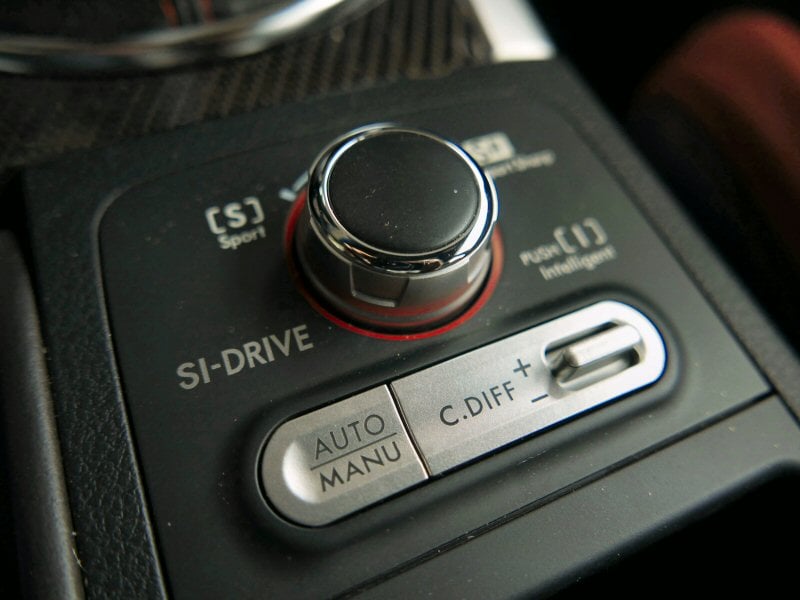
Photo by Benjamin Hunting
Hydraulic Steering Highlights Improved Road Feel
Another pleasing difference between the 2016 Subaru WRX STI and the standard WRX (and indeed, many other high-performance cars at its price point) is the presence of a hydraulically-assisted power steering system. You just heard me complain a bit about the 'old tech' in the WRX STI's drivetrain, and now you're about to read my praise for the equally-antiquated method used to turn the car's wheels. That's not a crazy position to take, and I'll tell you why.
Feedback.
The advantage of the WRX STI's hydraulic steering rack is its ability to more faithfully transmit what's happening under its front wheels as compared to the relatively feedback-free electrical setups that have sadly infiltrated the industry in a bid to improve fuel economy. In combination with its brake-based torque-vectoring system that helps the car pivot around a corner while reducing the perils of all-wheel drive understeer, I have to say I am impressed by how nimble and stable the Subaru feels even when attacking rough roads at a high rate of speed.
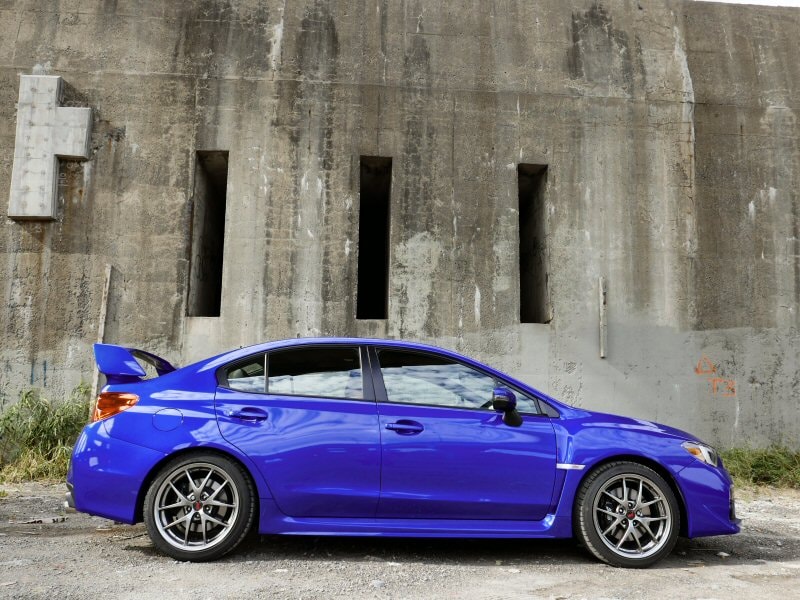
Improved Interior Nips At Premium Aspirations
The 2016 Subaru WRX STI is not a luxury car, despite featuring an MSRP that starts from just under $35,000 at the entry-level and which can push past the $40,000 mark for Limited models. It does bring a few premium elements to the table, however, such as an available navigation system, a better stereo than what we've come to expect in a Subaru (with a respectably logical touchscreen interface to boot) as well as heated leather upholstery and interior trim that's a cut above older editions of the car. It's not quite as plush as the Golf R or the slightly more expensive Audi S3 in terms of fit, finish, or ride quality but it's much more comfortable in daily driving than past STIs, and I could tell that Subaru engineers worked hard to better balance track day aspirations with the realities of the morning commute.
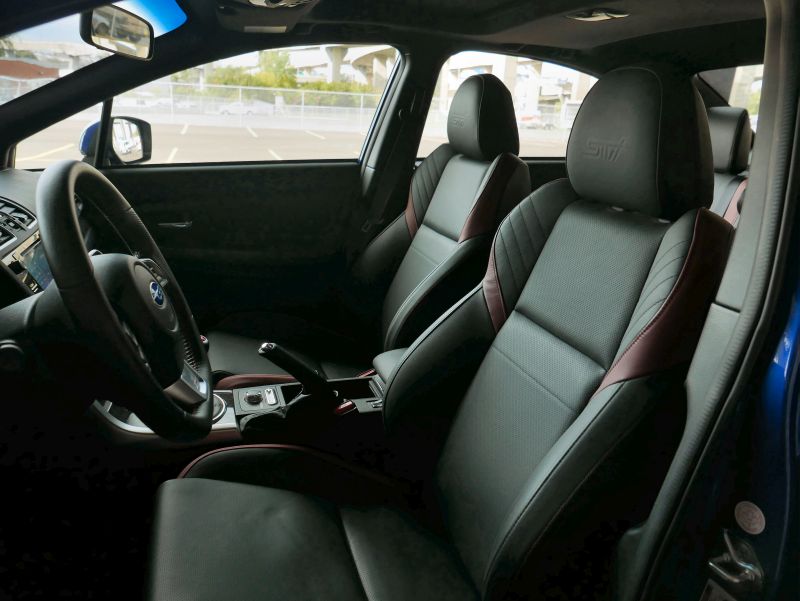
Photo by Benjamin Hunting
Tech Features Still Lagging
Subaru might have improved on the WRX STI's infotainment system and touchscreen interface with the new model (and included the new Starlink mobile phone integration feature for 2016), but there are still a number of key areas where the sedan isn't keeping up with the rest of the compact segment. The Subaru WRX STI has no answer to the geofencing features or teenage driver controls that are becoming more common on affordable automobiles, nor does it provide the kind of advanced performance readouts (aside from a digital boost gauge), lap and acceleration timers, or other gadgets and gizmos increasingly stuffed into sporty vehicles.
It's not so much that I lament the absence of this gear, but simply that I recognize it makes the car not quite as competitive in the eyes of some buyers. Although I appreciate the purity of the driving experience that Subaru is going for with the STI, it's important not to let inertia harden into anachronism like it did with the now-departed Lancer Evolution.
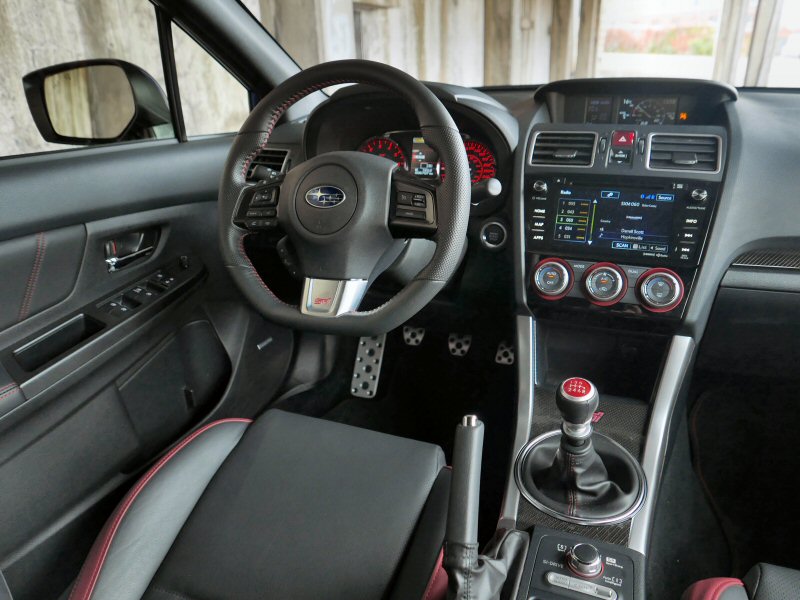
Photo by Benjamin Hunting
Safety Gear Not Migrating To STI
A further example of the 2016 Subaru WRX STI being left out of the modern technology loop is the absence of the automaker's EyeSight safety system. EyeSight makes use of a set of stereoscopic cameras mounted at the top of the windshield to monitor traffic immediately surrounding the car, which in turn informs collision warning, lane departure warning, and even automated braking systems offered on other Subaru models.
One such Subaru is the WRX, which makes the EyeSight system available if you order it with a continuously-variable automatic transmission. I know that EyeSight might not play nice with the more analog aspects of the STI's drivetrain (and the car does feature a blind spot monitoring system), but to strip the Limited trim level of a feature available on a lesser model doesn't present the best optics to consumers. Subaru is known for making safety a priority, and while some of the hardcore gearheads ordering the WRX STI might not care as much about automated braking as they do Brembo brakes (which the car naturally comes with as standard equipment), you can bet that others will.
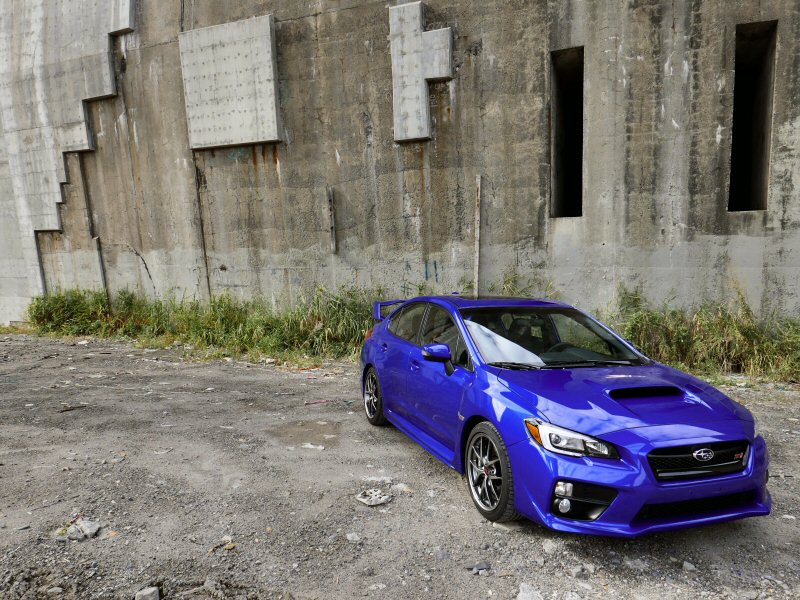
Photo by Benjamin Hunting
The Base WRX Is The WRX STI's Own Worst Enemy
It's not the lack of active safety gear that will give would-be buyers of the 2016 Subaru WRX STI pause so much as what's sitting there beside it on the lot. Even the most expensive Subaru WRX Limited is still a few thousand cheaper than a base STI, and the entry-level WRX is a full $8,100 less. Drive them both back-to-back and unless your local dealer's test route involves a harrowing set of S-curves or perhaps the Andretti hairpin at Laguna Seca you're probably not going to see much of a difference between them from a performance perspective. In fact, it's not until you barrel down the front straight of your favorite road course, mash the brakes, and feed the STI into a turn that you really appreciate why you paid more.
Herein lies the problem. While there will always be a contingent of buyers who simply must have the 'best' or most expensive example of any given automobile, the WRX STI's primary appeal is to the small pool of drivers who regularly test their mettle on a closed circuit. The rest of the time - even on the famed two-lane, long way home, Friday-after-work cliché - the standard WRX is essentially the pricier car's equal. That's a tough marketing position for Subaru to be in, especially since the STI doesn't pull far enough ahead in either interior quality, refinement, or technology features to further justify its bigger sticker.
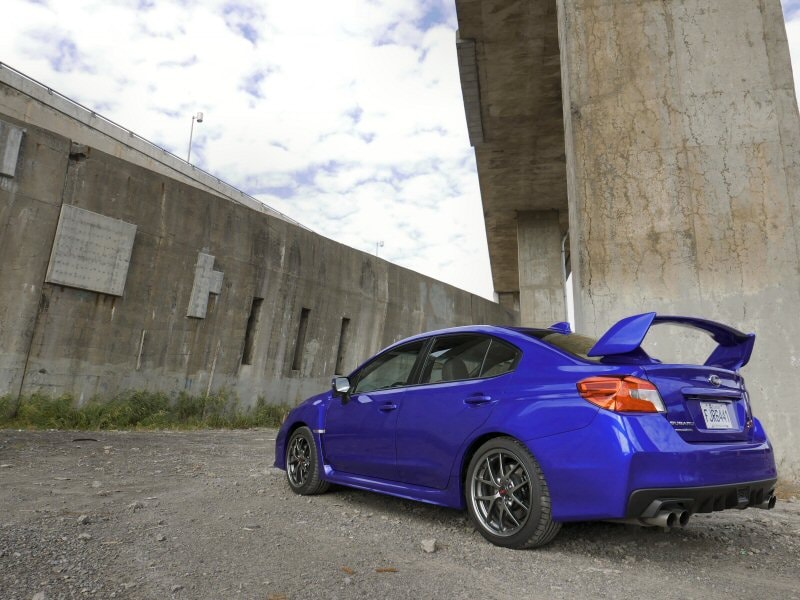
Photo by Benjamin Hunting
2016 Subaru WRX STI Pros / Cons
2016 Subaru WRX STI Pros / Cons
Pros:
- DCCD all-wheel system is excellent in a track environment
- Turbocharged engine is powerful, reliable
- Suspension is remarkably comfortable in daily driving
- Exterior styling is classically over-the-top
- Improved infotainment system
- Fast and fun
- Not that expensive in base trim
Cons:
- Value-wise, outdone by almost-as-quick WRX
- Lack of advanced safety equipment
- Minimal luxuries despite premium pricing
- Not fuel efficient
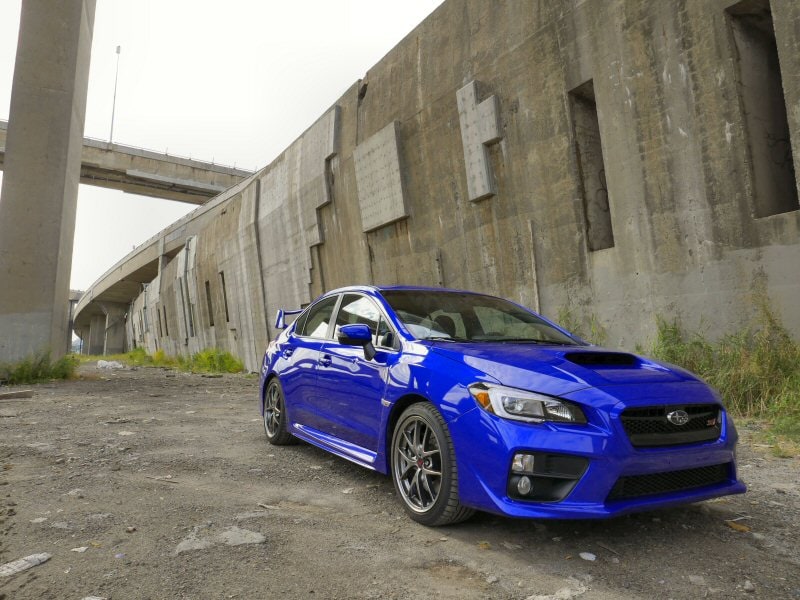
Photo by Benjamin Hunting